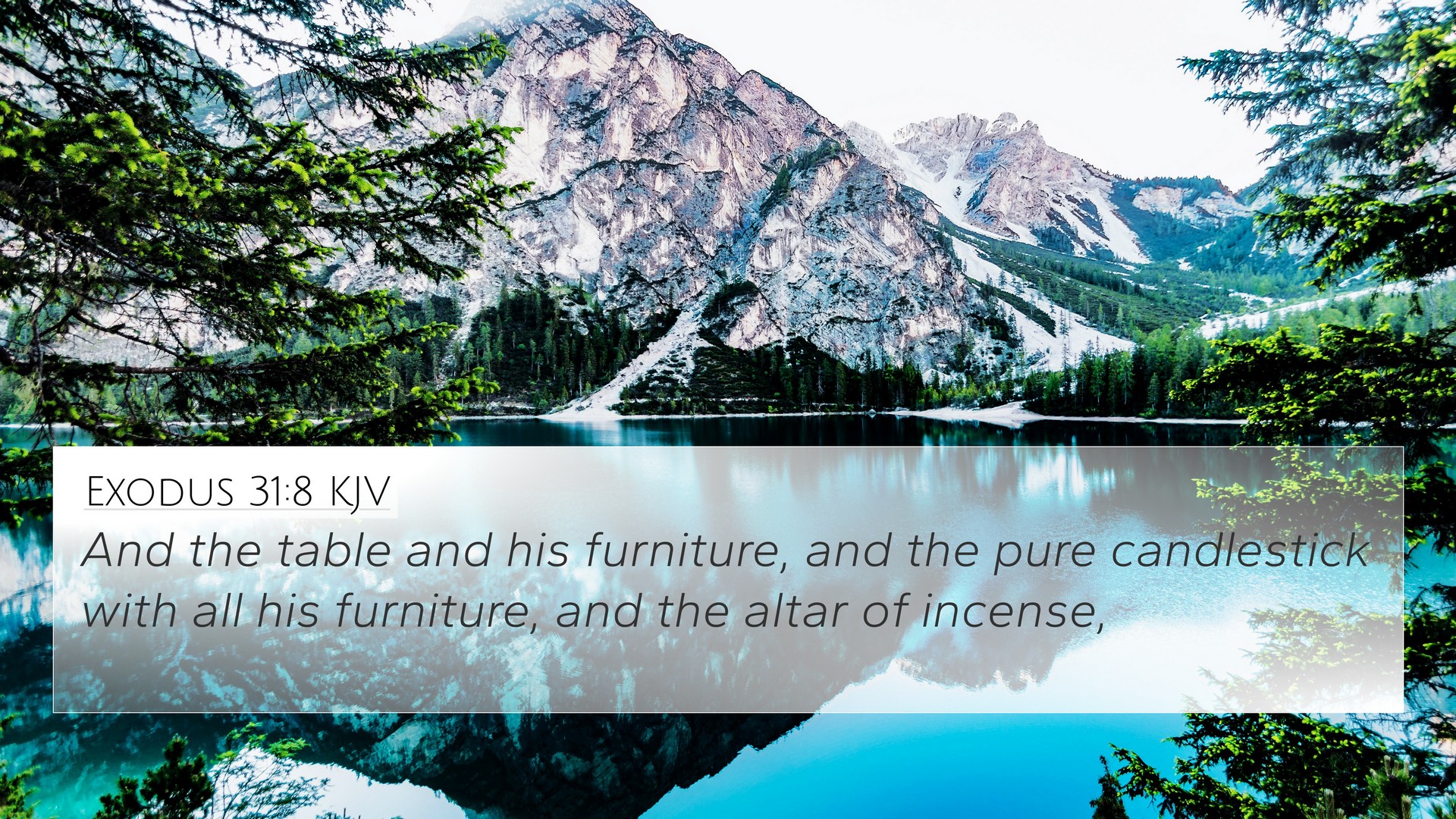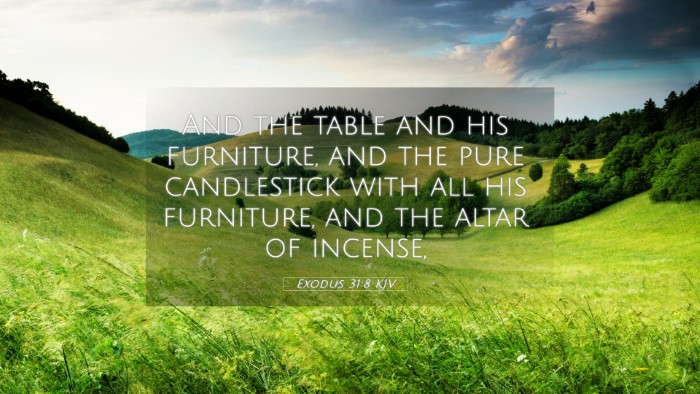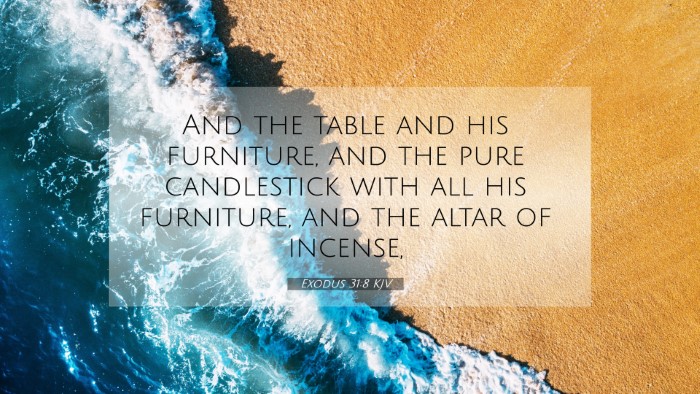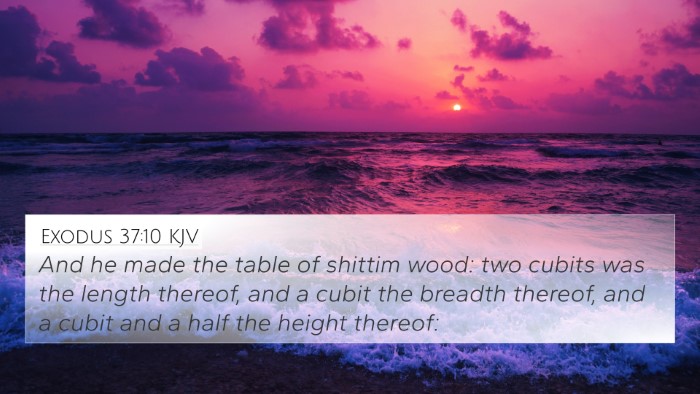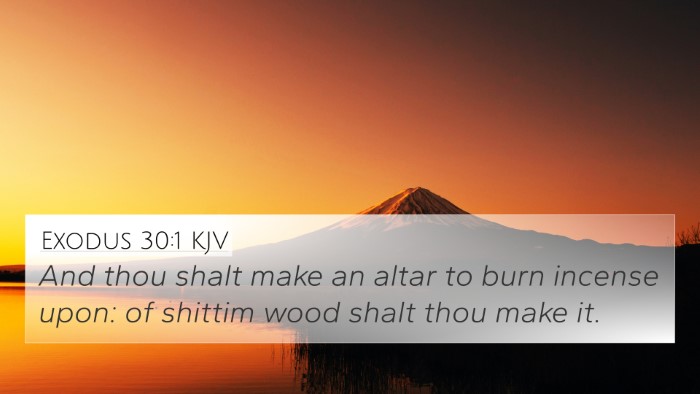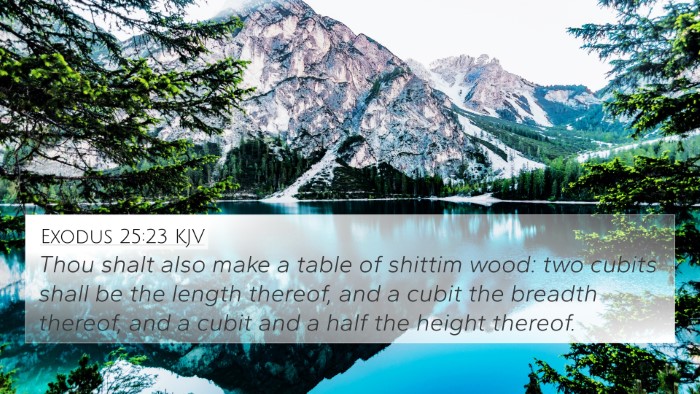Understanding Exodus 31:8
Exodus 31:8 states: "And the table and his furniture, and the pure candlestick with all his furniture, and the altar of incense." This verse describes the detailed provisions for the construction of sacred objects used in the worship of God, emphasizing their significance within the Israelite community as they prepare to establish a physical representation of their faith through the tabernacle.
Summary of Insights from Commentaries
The importance of each item, particularly the table and candlestick, is underlined in commentaries by Matthew Henry, Albert Barnes, and Adam Clarke. These sacred items symbolize the relationship between God and His people, signifying sustenance, divine presence, and the light of God in the lives of believers.
Detailed Analysis of the Verse
- Matthew Henry's Commentary:
Henry emphasizes the symbolism of the table and the candlestick. The table represents God's provision, while the candlestick signifies the illumination of divine truth. These items were not merely functional but were laden with spiritual meaning, linking the mundane with the divine.
- Albert Barnes' Notes:
Barnes explains how each piece of furniture within the tabernacle served a liturgical purpose, helping the Israelites in their worship practices. The itemized listing in the verse shows the meticulousness with which God instructed their construction and placement, highlighting His holiness.
- Adam Clarke's Commentary:
Clarke connects the verse with the relevance of ceremonial worship. He mentions that these artifacts foster community and ritual purity among the Israelites, helping to establish a sense of identity as a chosen people set apart for the service of God.
Bible Cross-References
This verse interlinks with several other passages that share thematic and spiritual relevance:
- 1 Chronicles 28:12: Details the plans given by David for the temple, connecting the furnishings of the tabernacle with the later temple constructs.
- Hebrews 9:2: Refers to the first tabernacle as having a candlestick, illustrating the continuity of divine revelation through sacred objects.
- Exodus 25:23-30: Directly describes the table of showbread, reinforcing its role in worship and communion with God.
- Matthew 5:14: Jesus states, "You are the light of the world," echoing the symbolism of the candlestick as a light bearer.
- Revelation 1:20: Where the seven lampstands are interpreted as the seven churches, linking the candlestick’s symbolism of light to the church's mission in the world.
- Leviticus 24:5-6: Discusses the preparation of the bread of the Presence, intertwined with the significance of the table.
- Psalm 132:7: Reflects the desire for a dwelling place for God, akin to the tabernacle items designed for His service.
- 1 Peter 2:9: Where believers are called a royal priesthood, highlighting their role in offering spiritual sacrifices, reminiscent of the worship practices established around these sacred items.
Thematic Connections
The verse and its elements can be linked to broader themes in scripture, creating a tapestry of meaning:
- God's Provision: The table signifies sustenance, akin to God's provision of manna in the desert.
- Divine Presence: The candlestick symbolizes God’s presence among His people, reminiscent of Jesus as the 'Light of the World.'
- Sacred Order: The meticulous crafting of the tabernacle’s furnishings points to the overall theme of holiness and order that pervades worship.
- Covenantal Relationship: These furnishings illustrate God’s desire to dwell among His people, emphasizing His covenantal promises.
Application to Daily Life
Understanding Exodus 31:8 invites the reader to appreciate the significance of sacred spaces and the role they play in facilitating a connection with God. The rich layers of meaning suggest that much like the furnishings represent specific aspects of worship, believers are also called to embody these principles in their lives — providing sustenance, illuminating truth, and maintaining the sacred.
Conclusion
In summary, Exodus 31:8 serves not only as a historical account but also as a profound insight into the nature of divine worship and communal identity among God's people. The verse's connections and implications can be further explored through proper Bible cross-referencing techniques, offering deeper understanding and enhancing one's journey through scripture.
